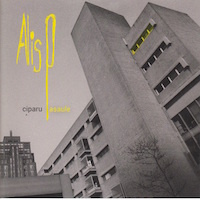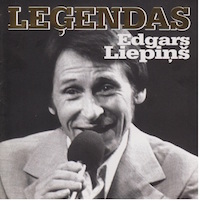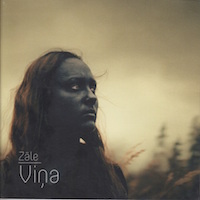Latvian rock group Alis P, led by veteran Swedish Latvian guitarist, vocalist and songwriter Gundars Rullis, return with their latest album Ciparu pasaule. Building on the foundation laid by their two previous albums – 2013’s Attiecību putra and 2009’s Uz priekšu, the group provide another refreshing collection of bluesy rock.
Rullis is joined by the team that also played on Attiecību putra – Edgars Rubenis on bass guitar and Edgars Āboliņš on drums, but Ciparu pasaule adds a new ingredient to the mix – the harp (and backing vocals) of Elizabete Lāce (who has also played with Latvian indie pop fairies Sus Dungo). Though the harp would not normally be considered to have a place in a traditional rock ensemble, the sound of the harp adds a new layer to the Alis P sound. In fact, according to the Alis P Facebook page, the group was almost on the verge of breaking up, but a fateful rehearsal with Lāce reinvigorated the band and they began recording new songs.
Alis P have always espoused an intentionally muddier sound, as well as the distinctive vocal stylings of Rullis, and that is evident immediately on the opening track ‘viensPretVienu’, which is underpinned by the thudding bass of Rubenis. However, this muddiness is now balanced by the clarity of the harp, giving the song a richer sound. Also, this song (among many on the album) also features the violin of Dina Skreitule, which gives the song an almost symphonic feel. This balance between instruments is also reflected in the lyrics, with its theme of equal opposites – such as night and day, sun and moon.
The bluesy grooves continue on ‘ceļš uzKautkurieni’, a song about an aimless wander, again built on a bass guitar progression from Rubenis. Here Rullis’ guitar skills are on display, with the squealing guitar again interacting with the dreamy harp of Lāce. The extended outro, with duelling bass and harp, all the time supported by Āboliņš’ driving beat, brings the song to a fitting close.
Title track ‘ciparuPAsaule’ begins with a deliberate, precise, almost mechanical guitar chord, perhaps appropriate for a song that could be interpreted as a critique of the modern day desire to put one’s whole life online. Rullis’ lyrics have often been ruminations and observations of everyday life, and the lyrics also reference Latvian President Vējonis’ remark during his first major speech that “he needs to start with a drink”, and question whether or not this is the kind of politics the people need.
The final song on the album, ‘ietCilvēks’, is also the longest on the album, at nine and a half minutes. The group is also joined by Lāce’s Sus Dungo colleague – Diāna Sus – on backing vocals, adding to the chorus. The song is a lengthy jam, with Rullis’ freestyle lyrics and funk elements combining to create an intricate opus. As the song closes, one by one the instruments leave, and finishes with just an extended drum break.
Combining rock, blues, and funk elements, Ciparu pasaule is another worthy contribution to the Latvian rock scene from Alis P. With the addition of unique sounds and multiple backing vocalists, the songs are now more layered and diverse. Though Rullis is now in his fourth decade of performance, there is no decrease in vitality or energy in the performances, and Ciparu pasaule displays the group at a peak artistic and musical level.
For further information, please visit the Alis P Facebook page.
Ciparu pasaule
Alis P
Biedrība HI, 2015
Track listing
- viensPretVienu
- ceļš uzKautkurieni
- pirmDienasVakars
- kadTuMosties
- ciparuPAsaule
- lielieVārti
- meklējos
- otrāPusēPagalmam
- visiemTiem
- ietCilvēks







